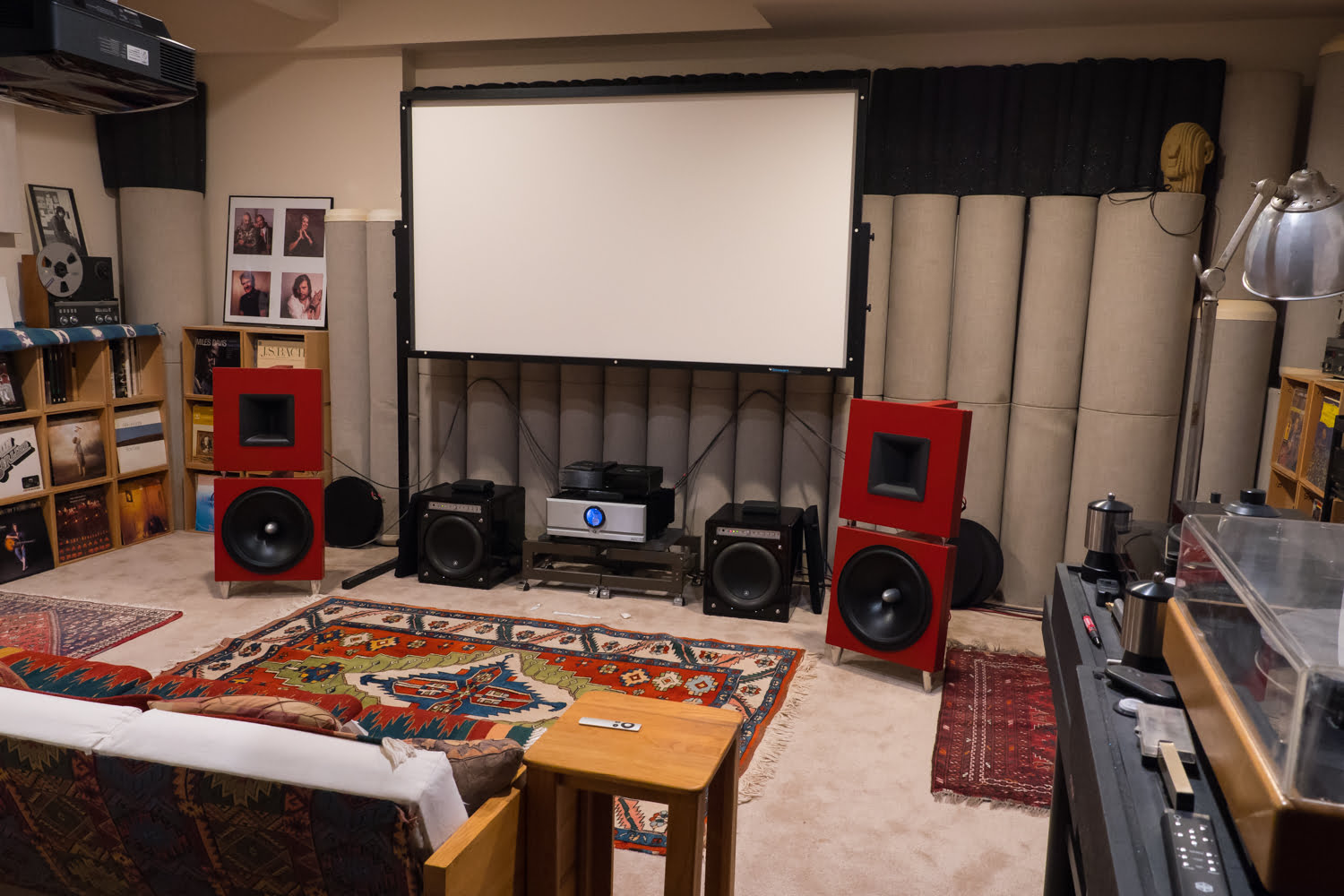It’s the time of year for saving money!
Almost every knowledgeable audiophile, if asked, “What is the biggest shortcoming in your audio system?” will answer, “My room.” And nine times out of ten, they would be right. Even if you have the lowest-distortion, most highly coveted audio gear on the planet, if placed in a way that exacerbates a room’s bad sonic qualities, the sonic results can be underwhelming.
 And what are the worst practices in terms of room arrangement, placement of gear, and listening positions? Let’s look at a few…
And what are the worst practices in terms of room arrangement, placement of gear, and listening positions? Let’s look at a few…
If you’ve ever been to an audio show you’ve probably noticed the most often-used set-up puts all the gear, including analog signal sources such as turntables, on the “front wall” (that’s the wall directly in front of you that has the loudspeakers) arranged, often symmetrically, between the two loudspeakers. It looks nice that way, greeting you as you set foot inside a room. But in terms of room nodes and pressure zones, that area between the two loudspeakers along the front wall has the most potential for resonance issues because it is the area where the sound is not only the loudest, but the most reinforcement from room’s own resonances. This arrangement, while best for a show, is probably the least sonically acceptable location in your home…but most audio set-ups that are posted on enthusiast pages in Facebook have similar arrangements.
 If you want to find out which parts of your room have the most and least amounts of room interactions, it’s relatively simple, and can be done with a minimum of test gear, or even no test gear. If you want to determine where your worst room nodes are (the ones that are reinforcing bass frequencies in a non-linear manner) put a continuous low frequency test tone (pink noise will also work) and merely walk around the perimeter of your room while listening to the changes in volume as you move. In some areas the tones will be louder than others – those are the places you don’t want to put audio gear that is more sensitive to outside vibration.
If you want to find out which parts of your room have the most and least amounts of room interactions, it’s relatively simple, and can be done with a minimum of test gear, or even no test gear. If you want to determine where your worst room nodes are (the ones that are reinforcing bass frequencies in a non-linear manner) put a continuous low frequency test tone (pink noise will also work) and merely walk around the perimeter of your room while listening to the changes in volume as you move. In some areas the tones will be louder than others – those are the places you don’t want to put audio gear that is more sensitive to outside vibration.
In most rooms the worst places to locate audio gear is at the 1/2way point in a room, whether that halfway point is against a wall or at the center midpoint in your room. If you look at the photos of many set-ups it appears that the primary listening position AND the location of the most sensitive gear is at room midpoints. That’s a shame.
Often the solution to the “mid-point problem” is to move gear and listening positions so they are slightly off the midpoints. Most of my systems have been skewed so they are slightly off-center in relation to the interior dimensions of the room. Five or six inches is often enough.
 Making sure your turntable and tube-based preamplifier (the two pieces of audio gear most likely to be affected by room-based or air-transmitted external vibration) are located in area that have lower or the least amount of air-borne or room-assisted external vibrations is the least expensive performance tweak I know of. In my main room I ran the tests I mentioned earlier and found a spot on my side-wall that had the least amount of room vibration enhancement and was as far away from the loudspeakers as I could manage. The ultimate solution, that I would encourage anyone building a purpose-built listening room to employ, is a separate, acoustically-isolated, “machine room” with all your vibration-sensitive gear inside. That’s what you see at 99% of all high-end recording studios because it works.
Making sure your turntable and tube-based preamplifier (the two pieces of audio gear most likely to be affected by room-based or air-transmitted external vibration) are located in area that have lower or the least amount of air-borne or room-assisted external vibrations is the least expensive performance tweak I know of. In my main room I ran the tests I mentioned earlier and found a spot on my side-wall that had the least amount of room vibration enhancement and was as far away from the loudspeakers as I could manage. The ultimate solution, that I would encourage anyone building a purpose-built listening room to employ, is a separate, acoustically-isolated, “machine room” with all your vibration-sensitive gear inside. That’s what you see at 99% of all high-end recording studios because it works.
So, just because a set-up looks pretty, all shiny, symmetrical, and visible from your listening chair, doesn’t mean it’s been set up in an optimal manner. Run the simple test I mentioned earlier and see for yourself if there are areas in your room that would be less sonically pernicious than your current set-up. What you find out may not only surprise you, but allow you to get better sound for no additional cash outlay and only several hours of moving furniture…








